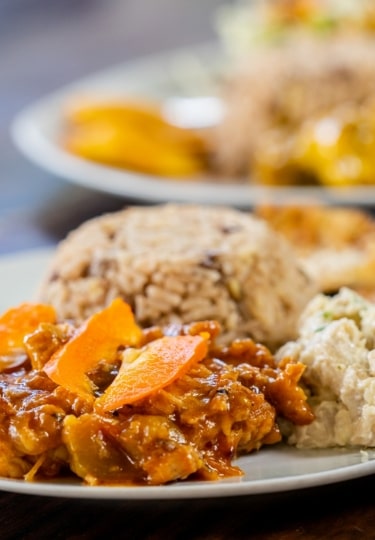Grenada’s food is a melange of the plants grown in the fertile soil and the influence of different cultures, from British, Spanish and French colonizers to enslaved Africans and Asian immigrants.
Known as the Spice Island, Grenada produces nutmeg, cinnamon, ginger, bay leaves, and other spices, all of which flavor native dishes from hearty one-pot stews to heaping plates of chicken and rice, tasty ice cream, and scrumptious chocolate.
Here are 12 of the best foods in Grenada to try.
Callaloo Soup
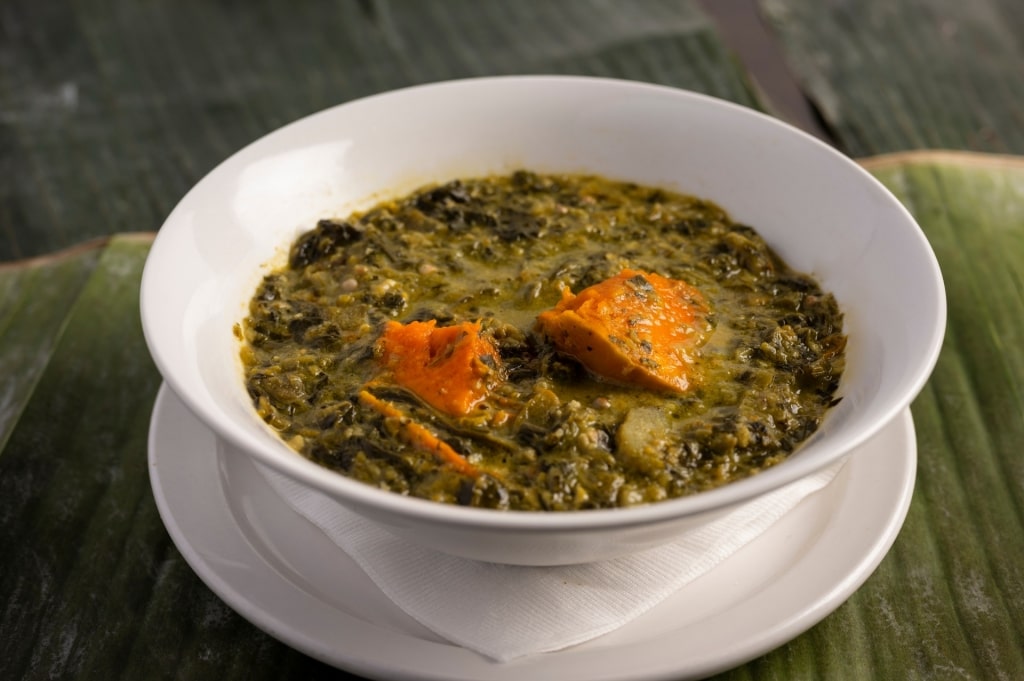
Callaloo soup
Callaloo soup, one of Grenada’s specialties, is a delicious example of how Caribbean culinary wizardry can transform a basic and common ingredient into a memorable treat.
The lowly callaloo, a tough and green spinach-like leaf of the dasheen plant, grows wild on many islands. But a well-made callaloo soup can be ambrosia. Slaves from Africa used the local greens, mixing them with okra.
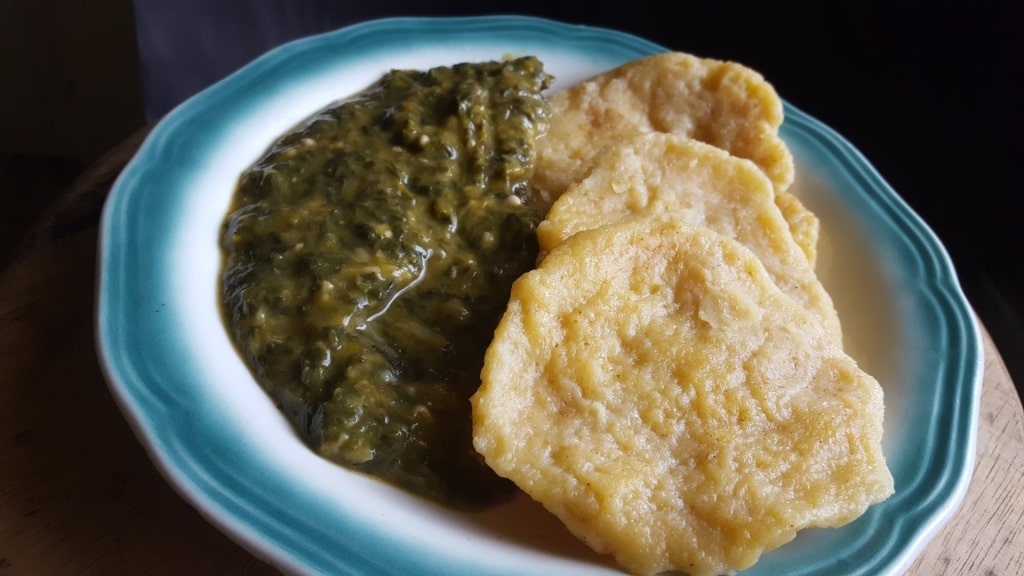
Callaloo soup
Although recipes vary, cooks boil the dasheen leaves, adding coconut milk and a protein such as saltfish or crab meat, as well as okra, garlic, nutmeg, coriander, and other spices.
Other recipes call for potatoes and sometimes spinach. Many serve the dish as a thick soup; others puree it.
Oildown
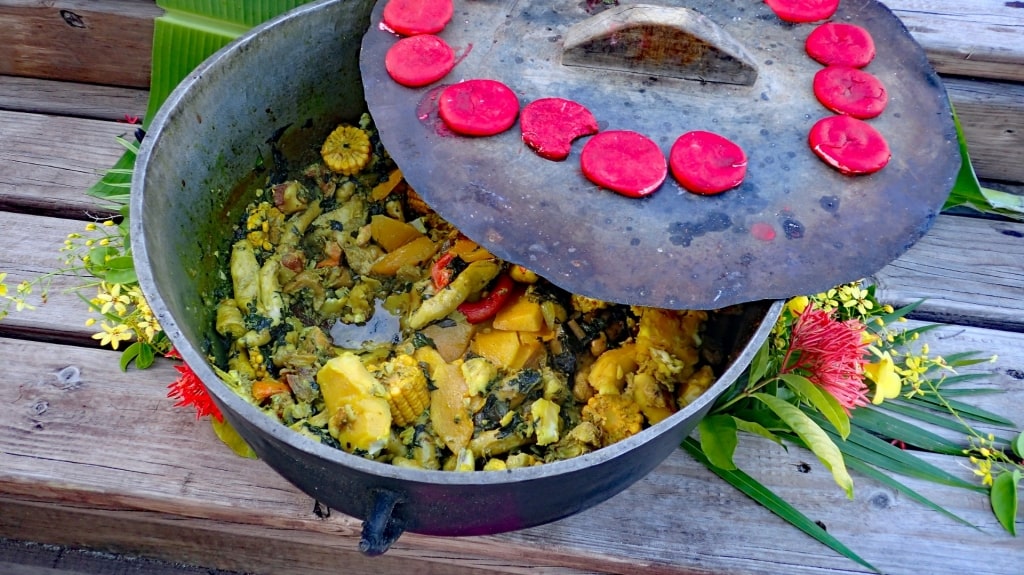
Oildown
Grenada is one of the best Caribbean islands for food, and its national dish, oildown, is a one-pot staple whose ingredients reflect aspects of Grenadian history. The name “oildown” comes from the fact that the oil from coconut milk is cooked down—absorbed—by the ingredients.
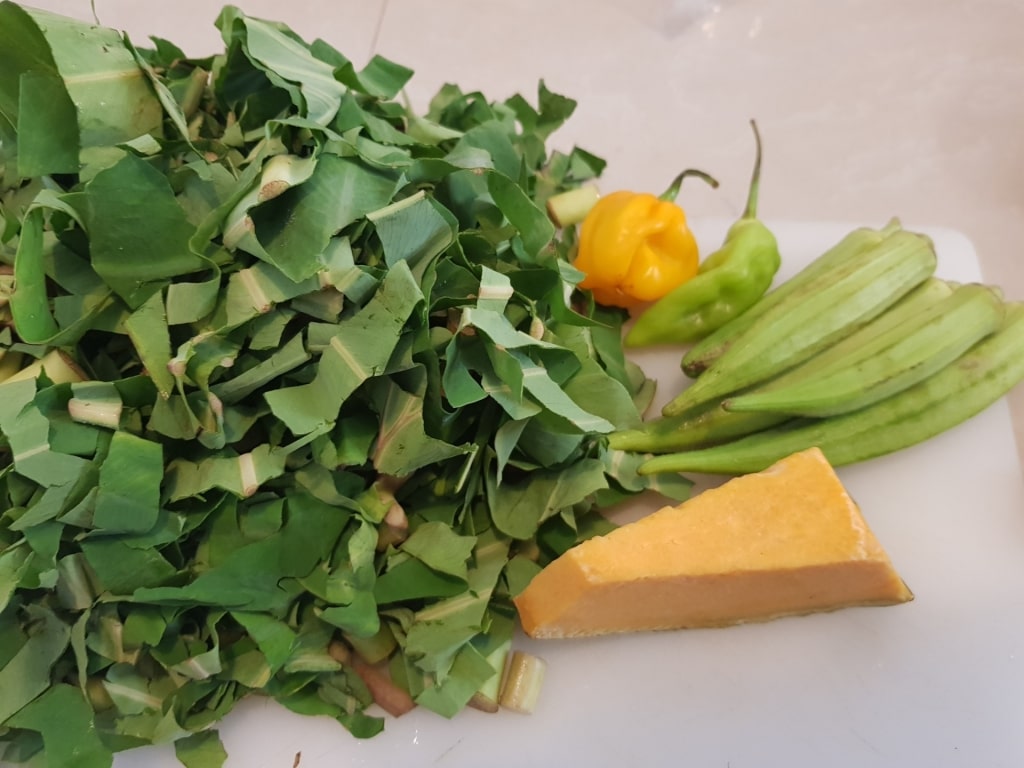
Dasheen leaves
A core ingredient, callaloo, the leaf of the dasheen plant, has been on Grenada for centuries.
The island’s indigenous tribes ate callaloo and enslaved Africans made one-pot meals of pig snouts and tails, cuts not favored by those in the grand house, with callaloo and other wild-growing vegetables.
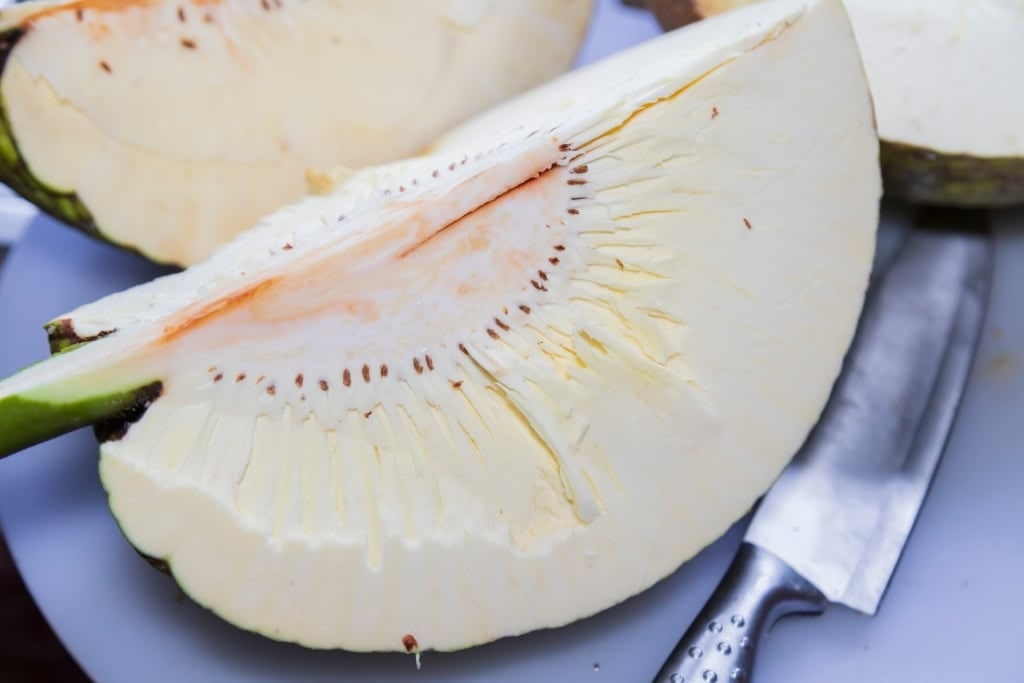
Breadfruit
Oildown recipes vary. To the coconut milk and breadfruit, cooks often add pigs’ tails, salted cod, chicken, pumpkin, carrots, green bananas, garlic, black pepper, Scotch bonnet pepper, curry powder, and flour dumplings, all layered with callaloo.
You can order oildown, one of the best Grenada foods to try, from many restaurants. In St. George’s, both Patrick’s Local Homestyle Restaurant and Dodgy Dock Grenada serve noteworthy versions.
Roti
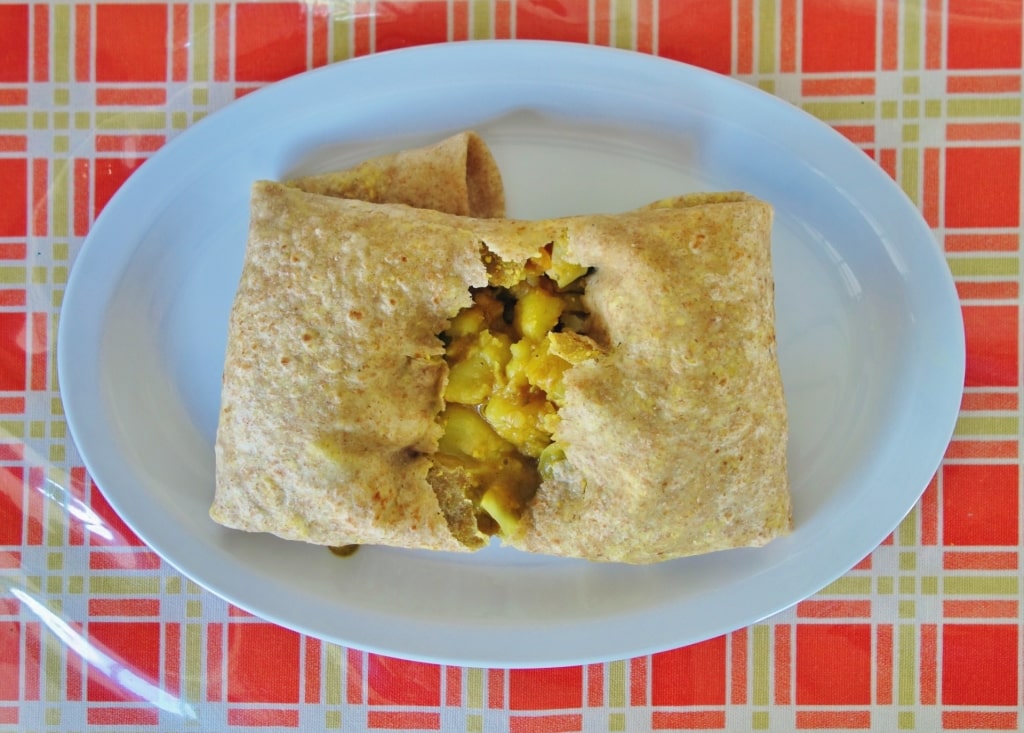
Roti
An East Indian finger-food, perfect for eating on the run, roti is a neat little package of meat, seafood or veggie curry wrapped in a soft pastry pocket. The snack is popular in Grenada as well as in Jamaica, and Trinidad and Tobago.
Three places to bite into rotis in the Grand Anse area are Chadon Beni Restaurant, Patrick’s Local Homestyle for its goat and beef roti, and Grill Master for chicken rotis.
Nutmeg Ice Cream

Nutmeg ice cream
In Grenada, where nutmeg grows in abundance, it is served with or grated on just about everything. But nothing even comes close to the fragrant, creamy perfection of nutmeg ice cream.
For a memorable dish, makers add fresh grated nutmeg instead of powdered forms to the mix of milk, heavy cream, sugar, and egg yolks.
Curried Goat
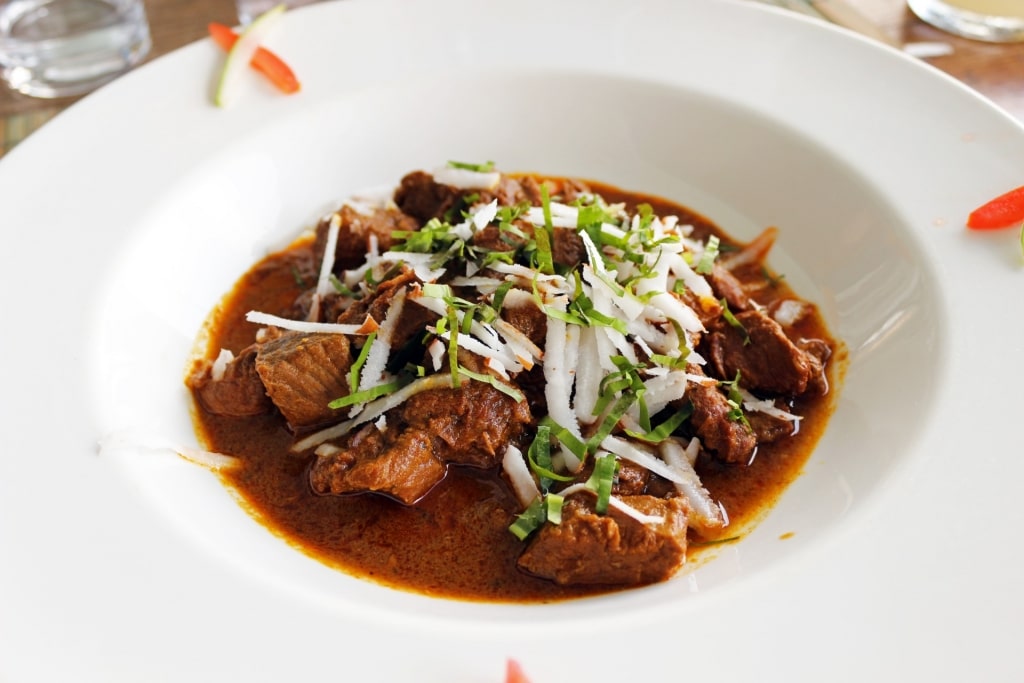
Curried goat
Popular in Jamaica and other West Indian islands, curried goat is a staple in Grenada. As in the Jamaican version, the use of rice and curry came with immigrants from India, many of whom arrived in the 1830s to work at low-paying jobs after formerly enslaved people left the islands. The goats already roamed the land.
Although recipes vary, most call for rubbing the meat with a mix of Scotch bonnet peppers, curry powder, garlic, and salt. One popular Grenadian recipe adds lime juice and ginger to the marinade.
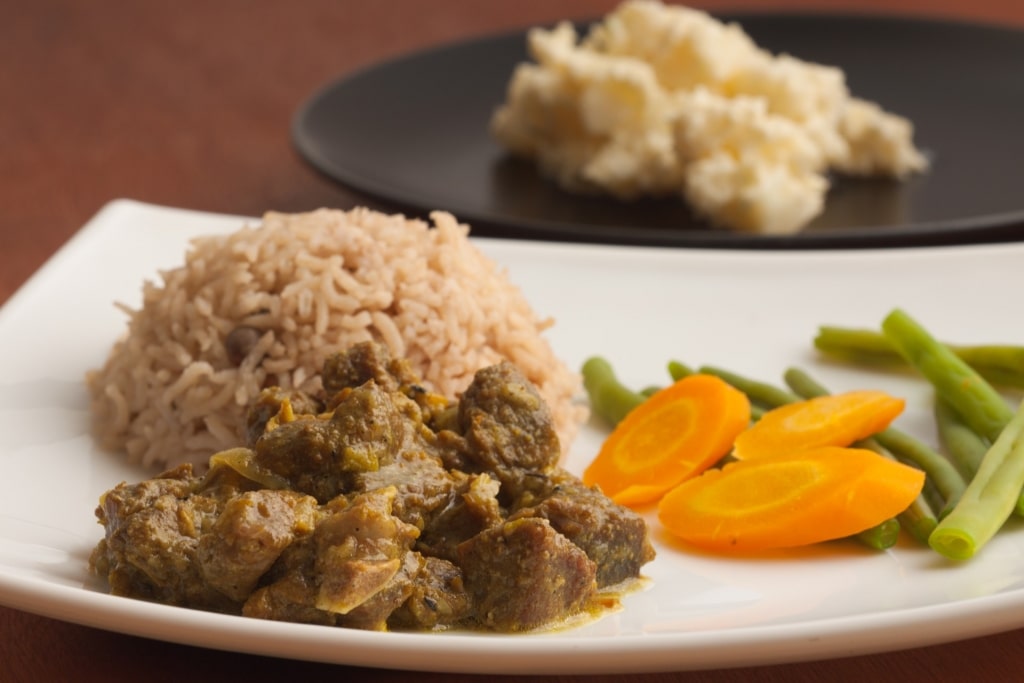
Curried goat
After browning the meat with oil and sugar in a casserole dish, the goat is cooked for 10 to 15 minutes. The remainder of the ingredients is then added, including chopped onions, tomato sauce, and curry powder. Rice and peas often accompany the flavorful stew.
Chocolate
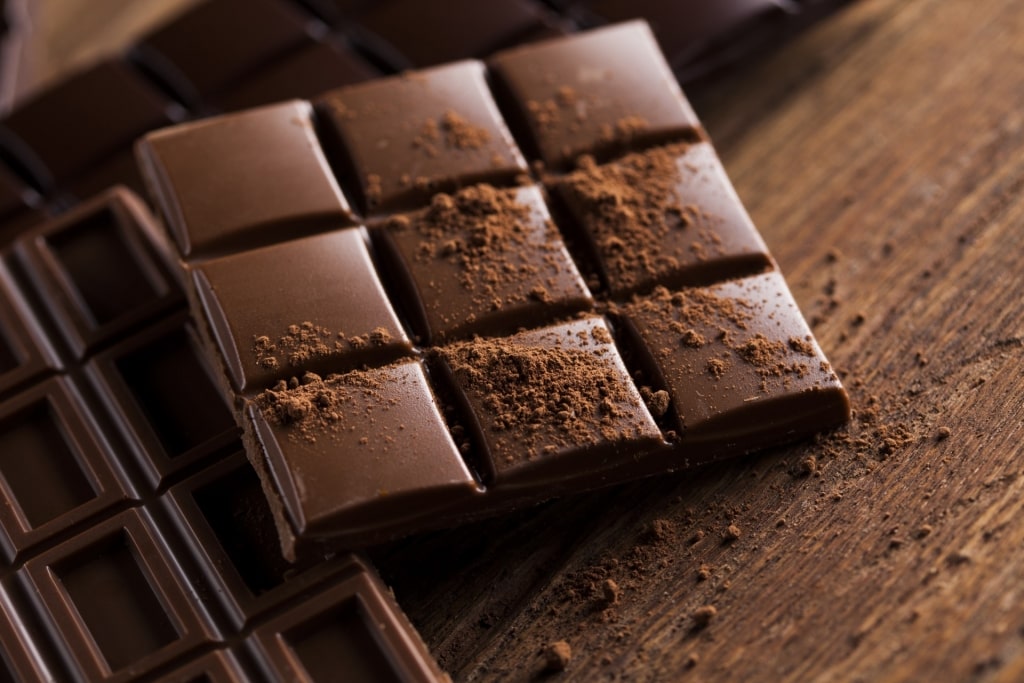
Chocolate
Grenada’s chocolate is rated as “fine,” a designation given to only 12 percent of the world’s exported beans.
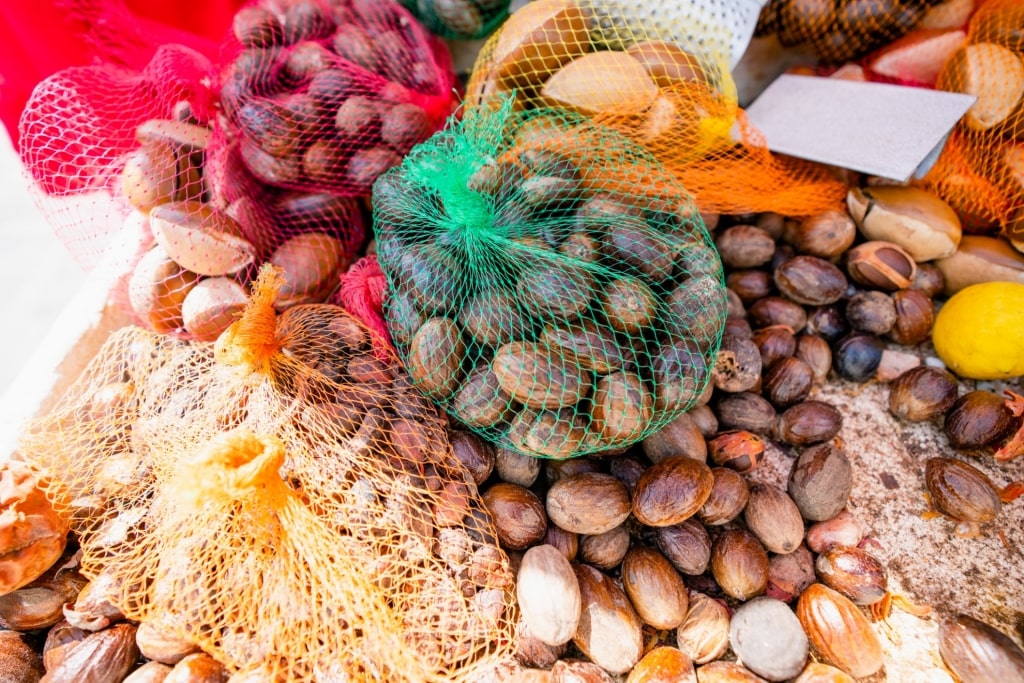
Cacao beans
Since Grenada’s cacao trees grow in proximity to nutmeg, cloves, cinnamon, and other spices, as well as near banana plants, the island’s cacao beans contain hints of those flavors.
Realizing the potential of Grenada’s fertile soil, the French, in 1714, first planted cacao trees in Grenada, hoping to export the beans to Europe. The plants and the project prospered, vaulting Grenada by the 1760s to the ranks of the largest producers and exporters of cocoa. For 200 years, exports cycled through periods of growth and decline.
When the Grenada Cocoa Association, established in 1964, took control of all island cocoa exports, Grenada still wasn’t producing its own chocolate.
Realizing that growers could increase their profits if they made chocolate as well as exporting beans, David Laurence Friedman, a.k.a Mott Green, and two others in 1999 established The Grenada Chocolate Company, the first chocolate producer on the South Caribbean island.
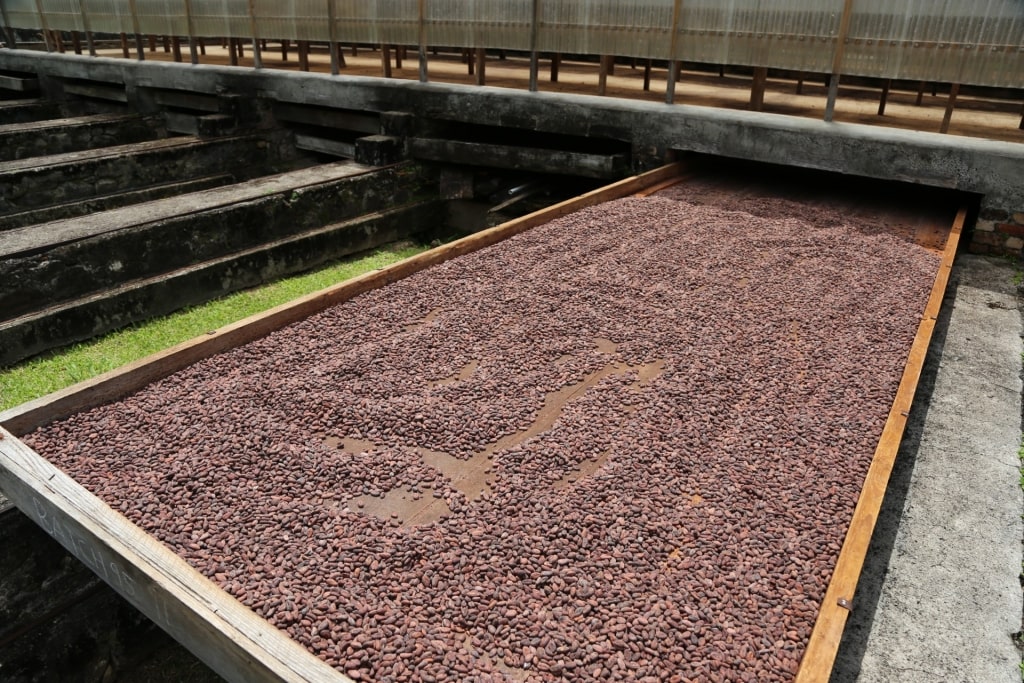
Belmont Estate
Grenada has several farm-to-bar chocolate companies. Most beans and bars are organically grown and produced.
One of the best things to do in Grenada is to take a tour of the Jouvay Diamond Chocolate Factory or the Belmont Estate, where you’ll learn about chocolate production from bean picking, sun drying, fermenting, sorting, grinding, and kneading to tempering, and molding.
Belmont also offers a Tree-to-Bar tour that leads you into the fields and ends with a three-course lunch of chocolate dishes.
If you prefer to remain in St. George’s but crave the Grenadian sweet, visit the House of Chocolate. Their small museum details the history and production of chocolate, with further specifics about Grenada’s chocolate.
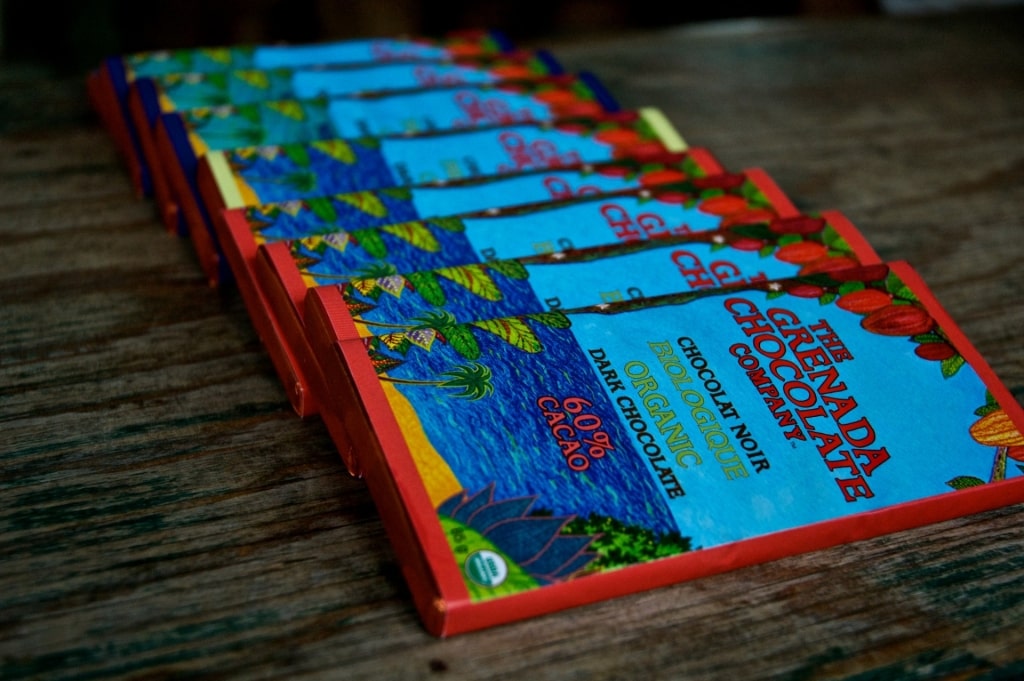
Grenada chocolate Photo by DarwIn on Wikimedia Commons, licensed under CC BY-SA 3.0
The best part: sampling chocolates made at the island’s factories, snacking on chocolate cakes, pastries, and ice cream, and buying chocolate bars, cocoa, and other Grenadian chocolate products.
Crabback
Few food sources go to waste on an island. Cooks turn the often comical-looking land crabs that scurry along the roadsides into flavorful entrees, with a taste similar to that of ocean crabs. After removing the crab from its shell, chefs add spices, herbs, butter, and cream.
Noted Grenadian chef Brian Benjamin, who learned recipes from his grandmother, also flavors his dish with white wine and cheddar cheese. The mixture is stuffed back into the cleaned shell and baked.
Foodies flock to Benjamin’s St. George’s waterfront restaurant, BB’s Crabback, named for his must-try dish. Don’t miss the crabback, but also try such Grenadian-inspired plates as barracuda wrapped in bacon, red snapper in a ratatouille sauce, oildown, and seared tuna.
Lambie Souse
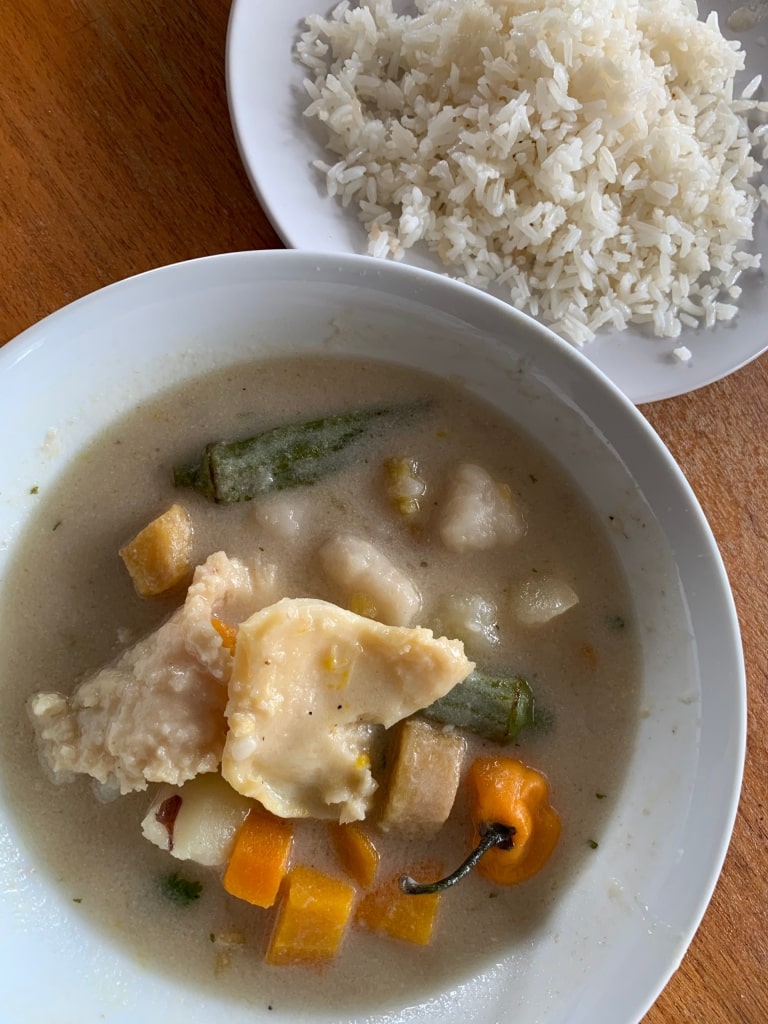
Lambie souse
Lambie souse is not made from lamb. Grenadians call conch “lambie.” Basically, souse is a clear broth made from various seasonings, vegetables, and meat.
The Caribbean, especially Trinidad, Haiti, and the Dominican Republic, is rich with souse recipes. Some involve pickled pigs’ feet, but not lambie souse, sometimes called “lambie waters” by locals.
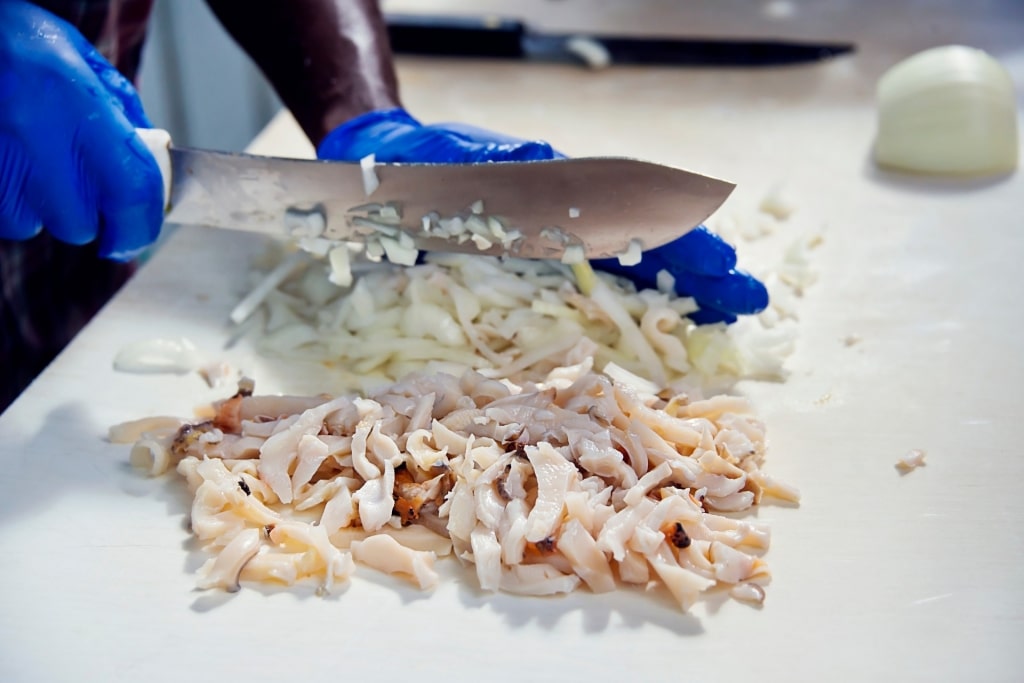
Conch
To soften the lambie, cooks smash it with a tenderizer, press the conch with a rolling pin, or cut the shellfish into small pieces and boil it in water.
To create a flavorful stock, chefs add potatoes, carrots, onions, and sometimes okra to the water, plus salt, black pepper, pimento, cilantro, and other spices.
In some versions, dumplings are tossed into the boil.
Groundnut Sugar Cake
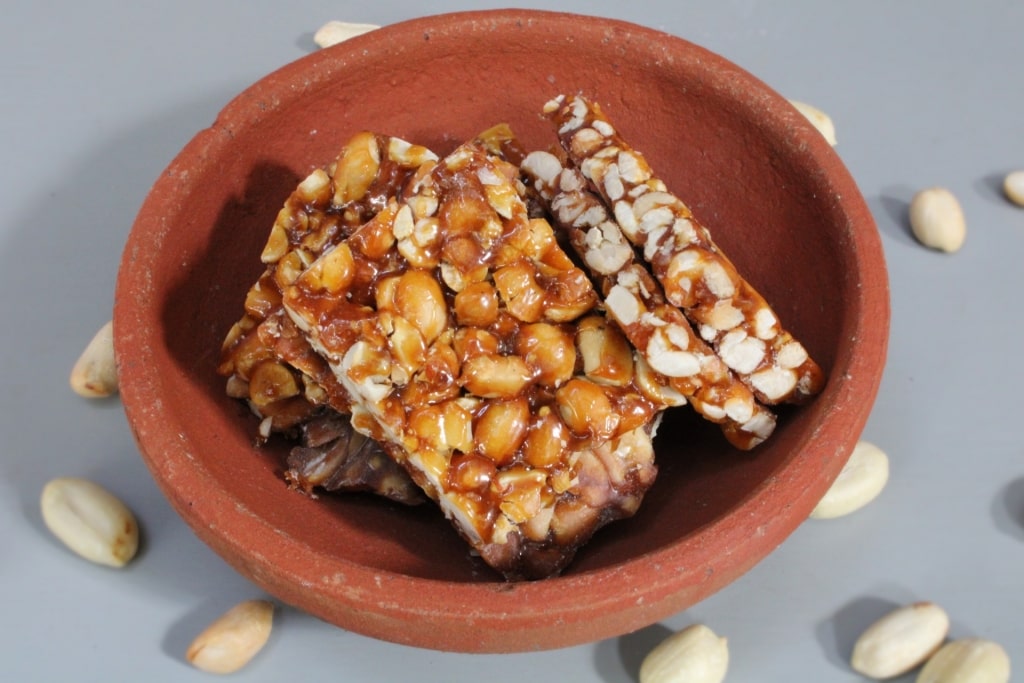
Groundnut sugar cake
If you love nuts and sweets, then search for this Grenadian candy. Unlike a cake made from flour, groundnut sugar cake is a delicious, candied, stuck-together mound of roasted peanuts.
Traditionally, islanders roasted the shelled peanuts over open fires. Most cooks now buy baked peanuts or bake them in the oven.
The recipe calls for bringing sugar, ginger, and water to a boil, stirring until the liquid forms a thick syrup that is poured over the peanuts. Then, the candy maker spoons out clumps of the sweet treat to cool. You can find groundnut sugar cakes in markets, bakeries, and from street vendors.
Pelau
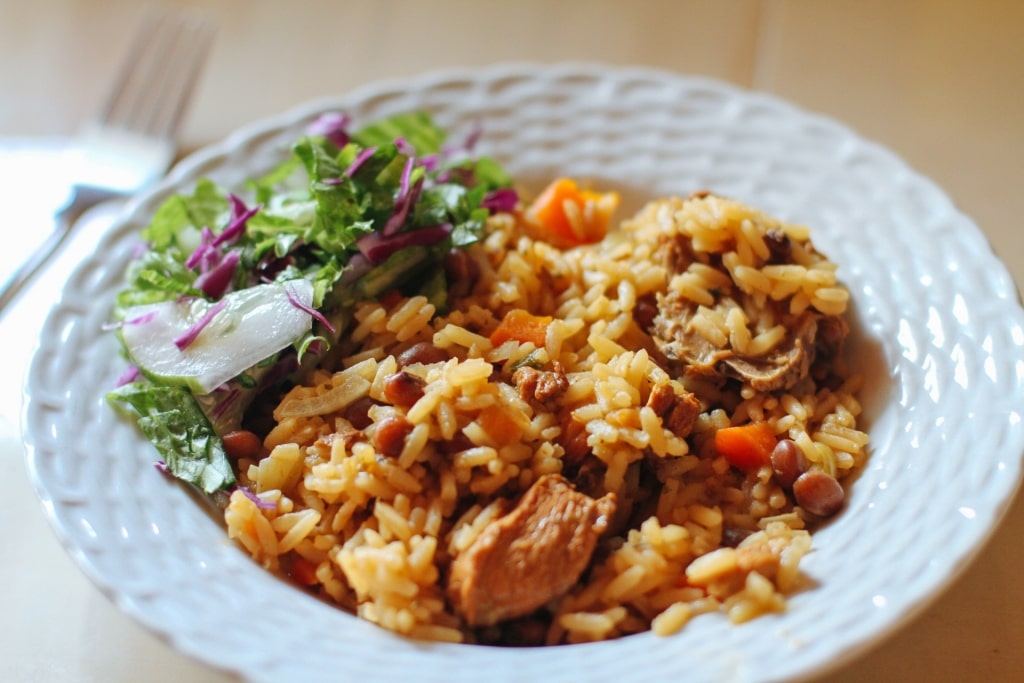
Pelau
A traditional West Indian rice dish popular in Grenada, Trinidad, St. Lucia, and Saint Vincent and the Grenadines, pelau is made with meat, typically chicken. Pelau starts with seasoned and marinated chicken browned in caramelized sugar.
Cooks add pigeon peas and carrots to the pot, followed by rice and coconut milk. For added flavor, some cooks toss in a “green seasoning” of chopped scallions, thyme, onion, pimento, and garlic.
Deyna’s Tasty Food in St. George’s serves chicken pelau and other Grenadian dishes for lunch.
Tania Log
Spanish explorers brought tania from Central America to the Caribbean. Also known as malanga blanca, tania is a starchy root vegetable with a slightly nutty taste.
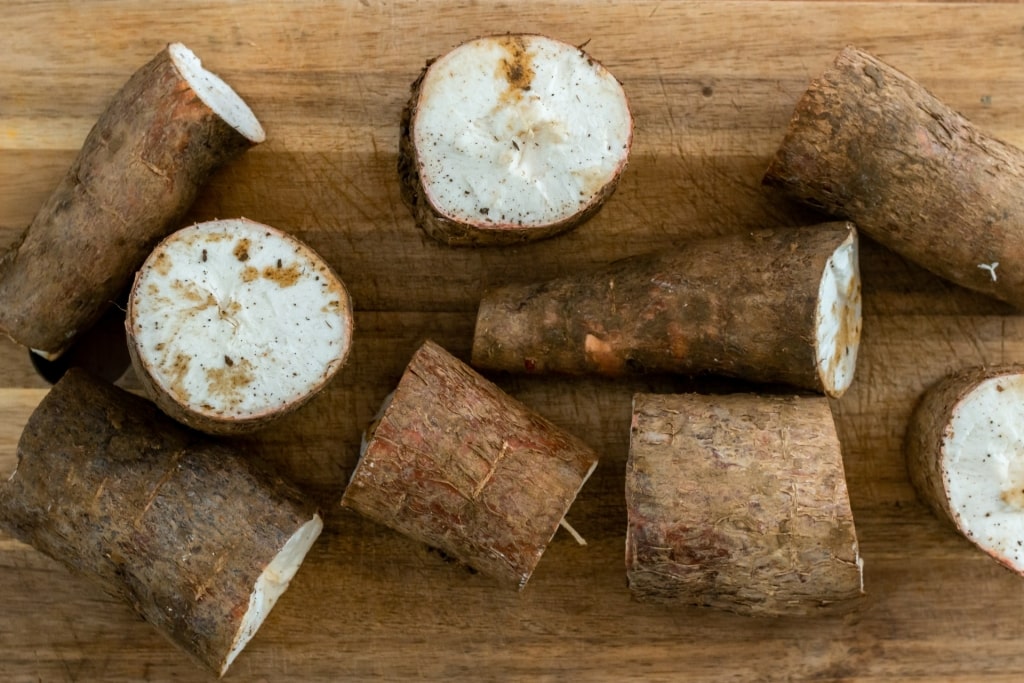
Tania
Grenadians eat tania log, a porridge, for breakfast and as a pick-me-up any time of the day. Some even consider tania log a natural aphrodisiac.
When peeled, grated, and boiled, tania thickens. Cooks add bay leaf, ground nutmeg, and cinnamon for flavoring. You can try tania log for breakfast at Deyna’s Tasty Food in St. George’s.
Rum
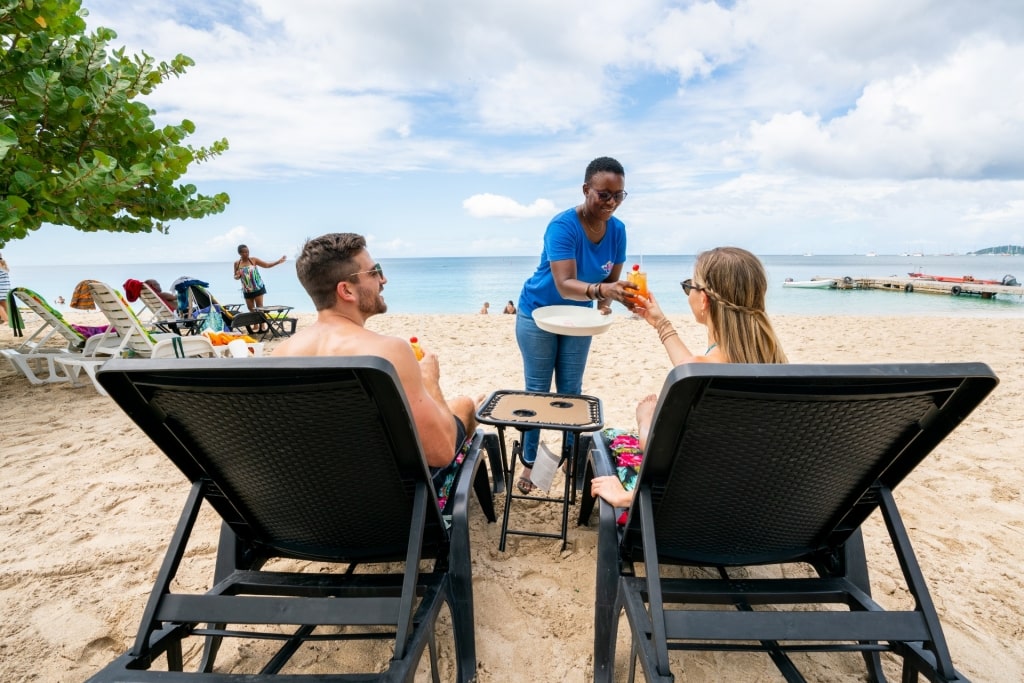
Rum punch
Ease into your Grenadian rum tasting with a glass of rum punch, the traditional welcome to the Caribbean. You can find this classic Caribbean cocktail anywhere.
Sip rum punch at Esther’s Bar or Umbrella’s Beach Bar on Grand Anse Beach, one of the best beaches in Grenada.
To make your own punch, follow the rum rhyme: One of sour, two of sweet, three of strong, four of weak. That traditionally translates to one part lime juice, two parts simple syrup, three parts dark rum, and four parts water.
However, rum punch recipes are as varied as flavored coffees. You could try a shaker of lime, orange, and pineapple juice with grenadine, light Caribbean rum, and a sprinkling of grated nutmeg. After all, Grenada is the Spice Island.
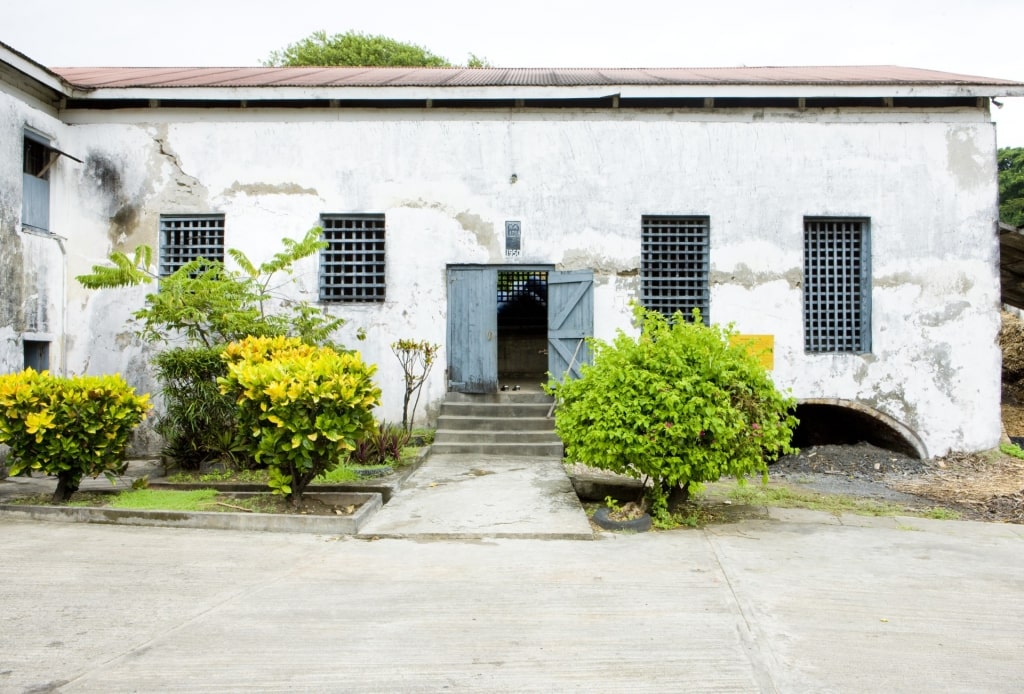
River Antoine Rum Distillery
Of the three distilleries in Grenada, River Antoine Rum Distillery, the oldest, operating since 1785, uses a 200-year-old water wheel to crush the sugar cane.
At the tasting at the tour’s end, you can sample the potent Rivers Royale Grenadian Rum’s blue label bottle, 138 proof, and its red label, 150 proof. The red is too potent to tuck into your checked luggage if headed back to the U.S., so enjoy it while you can.
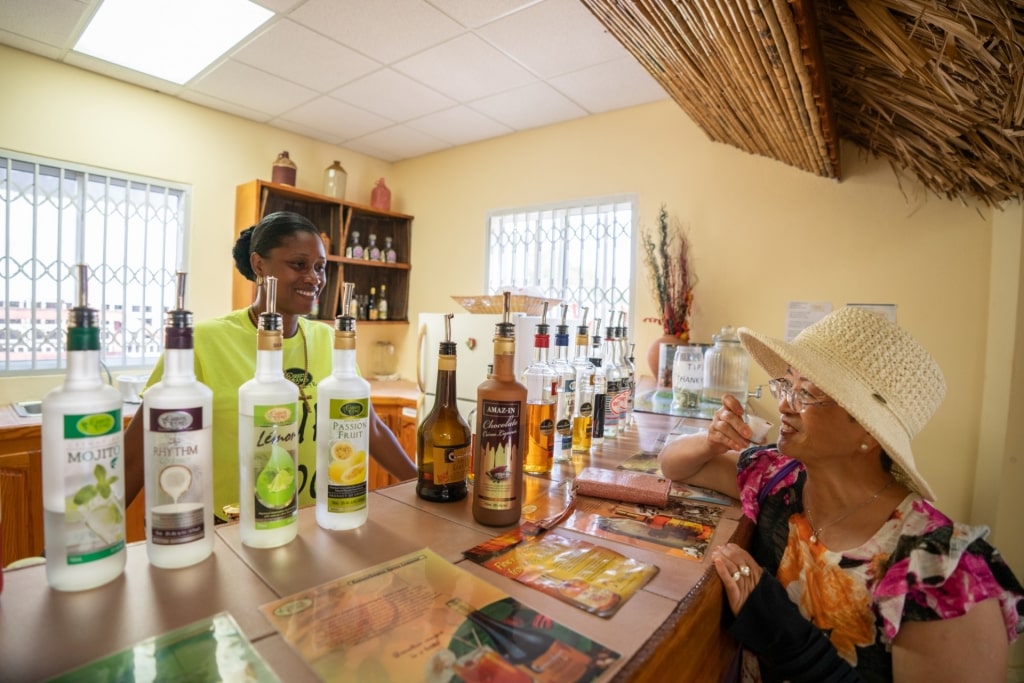
Grenada Distillers
Grenada Distillers Limited has been producing Clarke’s Court Rum since 1937. The factory tour here ends with a tasting at the distillery’s rum bar that includes popular 138-proof Clarke’s Court Pure White Rum.
Although Westerhall Estate Ltd. doesn’t distill rums, the company blends rums imported from Trinidad, then bottles and sells them on the island and internationally.
A Westerhall tour also ends with a tasting that’s likely to include the 138-proof Rum Number 5 and 10XO Rum, aged for 10 years.

Grenada
Experience authentic Grenadian food on a cruise to Grenada. Browse itineraries here to explore a wide variety of Caribbean cruise itineraries with Celebrity.
